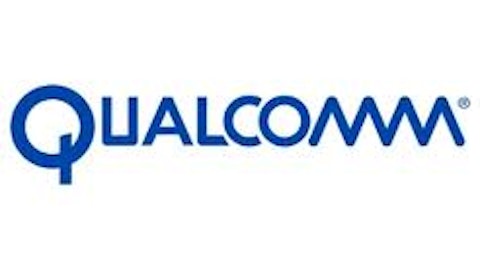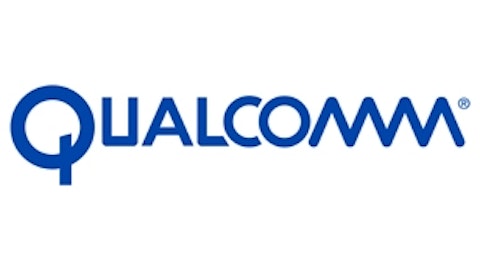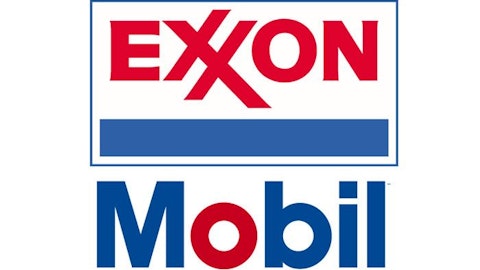Texas Instruments Incorporated (NASDAQ:TXN) has been on an upward trend since last October and has given investors a return of more than 20%. But, according to Gartner, global semiconductor revenue fell 3% to $297.6 billion in 2012, as compared to last year. It has also revised down its next year growth estimates to 4.5%. In the hugely competitive semiconductor market, this poses a threat to the long-term growth potential of Texas Instruments Incorporated (NASDAQ:TXN).

Analog processor segment
Texas Instruments Incorporated (NASDAQ:TXN) is the market leader in analog semiconductors, with more than 18% share. This segment contributes the maximum revenue for the company. Its share is expected to further increase in the future, driven by the company’s greater focus and expanding product portfolio.
Acquisition of National Semiconductor has also helped the company to broaden its product line and to enter into important industrial markets. This also helped Texas Instruments Incorporated (NASDAQ:TXN) expand its capacity, which will result in accelerated growth. This acquisition helped the company increase revenue by 10% in 2012. National Semiconductor’s strength in power management, amplifiers, and interface chips will lead to further growth in Texas Instruments Incorporated (NASDAQ:TXN)’s revenue, due to the emerging synergy.
Embedded processor segment
IDC expects the embedded processor market to grow 23% from 2012 to 2016, and to reach $47.6 billion. This means 3.65 billion embedded processors will be shipped in 2016, as compared to 2.54 billion in 2012. Currently, Texas Instruments is the second largest player with 12% share. The main focus for the company in this segment has been new product development to broaden its portfolio and serve more customers. Revenue from the embedded segment declined 7% in 2012, but this was more due to macro factors.
Last year, the company announced its plans to stop focusing on smartphones and tablets. This was done to focus more on expanding its OMAP footprint in the embedded application. The company intends to use its wireless connectivity solutions in a broader set of embedded applications, which require fewer resources and less investment. This will allow it to capture more market share in this $19 billion market.
Cash flows for investors
The company increased its dividend by 33% to $1.12 per share annualized. It also added another $5 billion to its stock repurchase plans. In the trailing 12 months, the company has returned a total of $3 billion to its shareholders, i.e. 107% of free cash flow. This reflects the company’s confidence in the long term sustainability in its analog and embedded processing business model. The company generated more than $3 billion free cash flow, which is 16% more than a year ago.
Competitors
QUALCOMM, Inc. (NASDAQ:QCOM) rose from being the sixth largest chip maker in 2011 to being the third largest chip maker in 2012. It has surpassed Texas Instruments in ranking because of the 29.2% rise in revenue. Its current market share is 4.3%, while it is 3.7% for Texas Instruments. The major growth segment for QUALCOMM, Inc. (NASDAQ:QCOM)is its wireless business, which was the only sector in the chip business to grow in 2012.
Driven by strong performance last year, the stock has been steadily rising since last July. Its trailing P/E ratio is 17.05, which is almost equal to the industry average. Its forward P/E is 13.15, indicating an optimistic increase in its EPS. The EPS growth forecast for the next five years is more than 18%. Therefore, the stock has a huge upside potential and investors ready to hold it for long term might want to invest in this stock.
STMicroelectronics N.V. (ADR) (NYSE:STM) is one of the major players in the fragmented semiconductor industry, with around 3% market share. It is Europe’s largest semiconductor chip-maker, based on revenue. It is also currently winding down its wireless venture with Ericsson AB, which has contributed to six consecutive quarterly losses. Its first quarter net loss was $171 million, bringing total loss over the last six quarters to about $1.3 billion.
After giving returns of around 65% to investors from November 2012 to February 2013, the stock is currently on a downward trend. It has fallen more than 20% since then. The trailing P/E ratio of the company is negative, while forward P/E ratio is 11.54. The EPS growth forecast for the next few years is also moderate. Therefore the stock is not expected to give much return to investors.
Conclusion
Texas Instruments has been expanding its analog and embedded portfolio every quarter. The company can currently support $5 billion of additional revenue without making any additional capital outlays. Due to continued capital expenditure to expand capacity, there might not be enough short term impact on the financial performance, but this is expected to increase the market share of the company in the analog division in future. Since both analog and embedded processor markets are fragmented with a number of players, the company has enough opportunities to gain more market share.
For 2Q13, the company expects revenue to be in the range of $2.93-$3.17 billion, while EPS to be in the range of $0.37-$0.45. It is currently trading with a trailing P/E ratio of 23.05, which is almost in line with the industry average. The forward P/E ratio is 16.98. This indicates higher than expected EPS growth. The EPS growth forecast for the next five years is more than 13%. The company also gives out enough dividends and has plans to buyback a huge chunk of shares in the years to come. Therefore, the stock is expected to give considerable returns to investors in mid to long-term.
The article This Semiconductor Company Has Upside Potential originally appeared on Fool.com.
Copyright © 1995 – 2013 The Motley Fool, LLC. All rights reserved. The Motley Fool has a disclosure policy.




